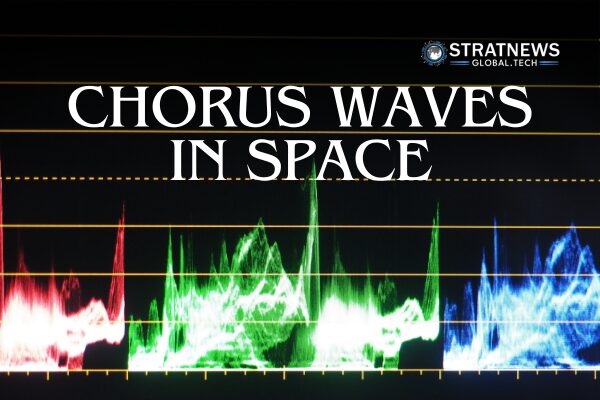Scientists Discover Chorus Waves Far Beyond Earth’s Magnetic Field
An international research team, led by Chinese scientists from Beihang University, has detected chorus waves over 160,000 km from Earth. Previously, scientists believed these space phenomena only occurred near Earth’s dipole magnetic field regions. Their study, recently published in Nature, challenges this long-standing assumption.
A Mysterious Sound from Space
The team recorded chorus waves with frequencies below 100 Hz and converted them into an audio format. The resulting sound, described as similar to “the chirping of birds,” provides a rare auditory glimpse into space activity.
“Chorus waves are low-frequency electromagnetic waves with frequencies ranging from 100 Hz to several thousand Hz,” explained Cao Jinbin, dean of the School of Space and Environment at Beihang University. “Their frequency spectrum resembles birdsong, which is why we call them ‘chorus’.”
The Role of Chorus Waves in Space
Earth’s magnetic field extends deep into space, interacting with charged cosmic particles. These interactions generate chorus waves, which were long believed to exist only near the geosynchronous orbit. However, the new findings show they can occur much farther from Earth than previously thought.
“For over 70 years, scientists assumed that these waves were confined to near-Earth space,” said Liu Chengming, an associate professor at Beihang University. “No one had considered their presence at such a great distance.”
The research team, including experts from China, the United States, and Sweden, analyzed extensive data from the Magnetospheric Multiscale Mission (MMS), a solar-terrestrial probe.
Practical Implications for Space Weather and Technology
Chorus waves play a crucial role in space physics. They contribute to the acceleration of high-energy electrons in Earth’s radiation belts and influence the formation of pulsating auroras in polar regions. Additionally, these waves can impact space weather, posing risks to satellites, spacecraft, and astronauts.
By improving our understanding of these waves, the study offers essential insights for space weather forecasting and the protection of space technology. Scientists believe these findings will enhance the accuracy of space weather models, ensuring safer operations for spacecraft and space missions.
With inputs from Reuters


